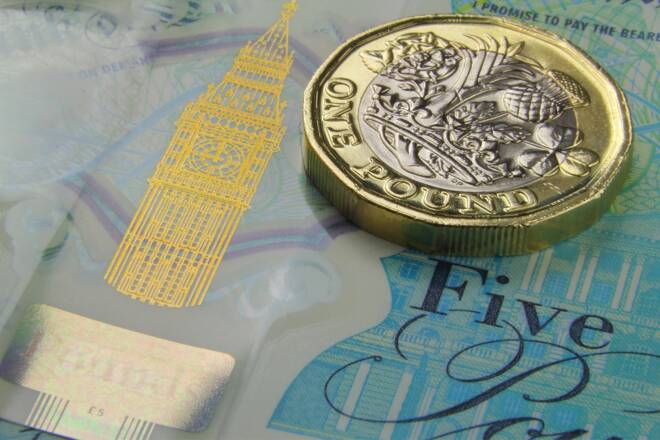Advertisement
Advertisement
GBP to USD Forecast: Sterling’s Slide Amid Economic Woes and Geopolitical Tensions
By:
The GBP/USD was under pressure on Thursday morning. Macroeconomic indicators suggest the BoE will cut interest rates before the Fed in 2024.
Highlights
- The GBP/USD declined by 0.40% on Wednesday, ending the session at $1.21106.
- Sentiment toward the UK economy, Bank of England monetary policy goals, and the Middle East conflict weighed on demand for the Pound.
- On Thursday, US GDP numbers could inflict more pain on the Pound. Economists predict the US economy to expand by 4.3% in Q3.
On Wednesday, the GBP/USD fell by 0.40%. Following a 0.73% slide on Tuesday, the GBP/USD pair ended the session at $1.21106. The GBP to USD pair rose to a session high of $1.21758 before falling to a low of $1.21062.
Geopolitics and Economic Woes: A GBP/USD Under Pressure
The GBP/USD pair continued to face losses on Thursday morning. Recent UK private sector PMIs resonated. The UK services sector contributes over 80% to the UK economy. A contraction across the services sector fueled bets on the Bank of England leaving interest rates unchanged.
Significantly, the PMIs also raised the chances of a UK economic recession. A prolonged recession may force the BoE to end its rate hike cycle and begin considering the timing of a first interest rate cut.
Amidst the negative sentiment toward the UK economy, the Middle East conflict remained a headwind. Increased geopolitical tensions drive demand for the US dollar at the expense of the Pound.
On Thursday, there are no UK economic indicators to change the mood.
US GDP Numbers for Q3 in the Spotlight
On Thursday, the US economy will be in focus, with GDP numbers for Q3 likely to garner investor interest. Economists forecast the US economy to expand by 4.3% in Q3 vs. 2.1% in the second quarter. A hot US economy would fuel bets on a December Fed interest rate hike.
October service PMI numbers from the US beat expectations, suggesting growth to continue into Q4. Higher interest rates would raise borrowing costs and pressure disposable income. A fall in disposable income would force consumers to curb spending, easing demand-driven inflationary pressure.
US Jobless Claims and Core Durable Goods Orders also warrant consideration. However, the GDP numbers will likely influence Fed rate hike bets more before US inflation numbers on Friday.
Short-Term Forecast
Sentiment toward the UK economy and Bank of England monetary policy leaves the GBP/USD on a downward trend. However, weaker-than-expected US economic indicators and softer inflation figures could mitigate further losses in the near term.
GBP to USD Price Action
Daily Chart
The GBP/USD pair remained below the 50-day and 200-day EMAs, affirming bearish price signals.
A GBP/USD drop below $1.20500 would bring the $1.18388 support level into view. Hotter-than-expected US GDP numbers and an escalation in the Middle East conflict would impact buyer appetite for the Pound.
However, a break above the $1.21216 resistance level would support a GBP/USD return to $1.22. Weaker-than-expected US GDP numbers and a de-escalation in the Middle East would fuel demand for the Pound.
The 14-period daily RSI reading of 37.63 indicates a GBP/USD fall to $1.20500 before entering oversold territory.
4-Hourly Chart
The GBP/USD hovers below the 50-day and 200-day EMAs, reaffirming bearish price signals.
A GBP/USD drop below $1.2000 would bring the $1.18388 support level into view.
However, a GBP/USD break above the $1.21216 resistance level would bring the 50-day EMA and the $1.22 handle into play.
With an RSI reading of 32.08 for the 14-period 4-hourly Chart, the GBP/USD may fall to $1.20500 before entering oversold territory.
About the Author
Bob Masonauthor
With over 28 years of experience in the financial industry, Bob has worked with various global rating agencies and multinational banks. Currently he is covering currencies, commodities, alternative asset classes and global equities, focusing mostly on European and Asian markets.
Advertisement
